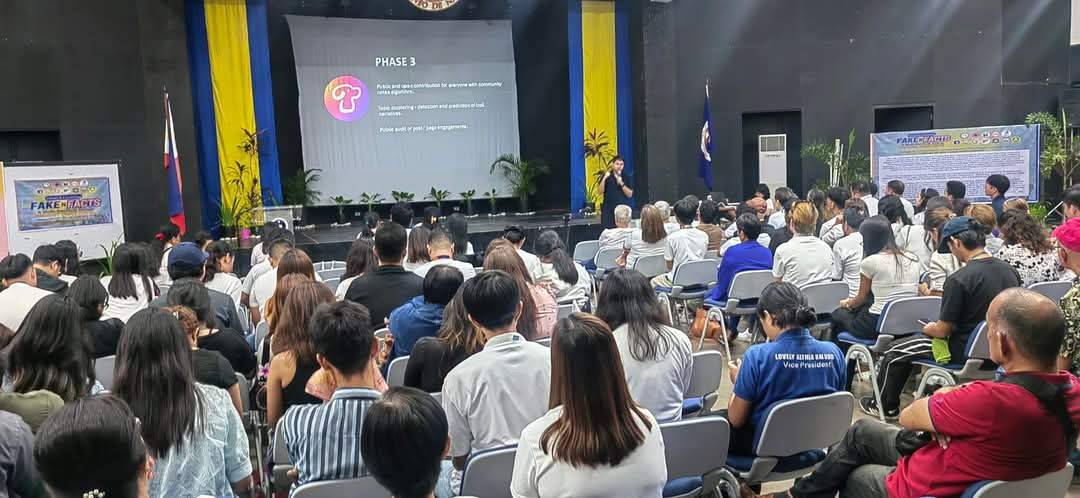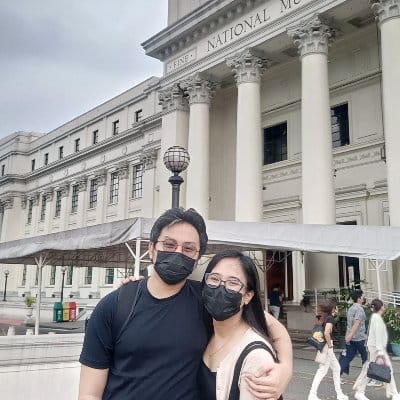Last month, I had the privilege of speaking at Ateneo de Naga at an event called "Fake n Facts," organized by the Naga City People's Council and other sectors. Our presentation focused on troll networks we had discovered, along with their patterns and methodologies.
While the presentation itself was informative, what I truly valued was the forum that followed, where members from various sectors asked questions and shared their concerns. These interactions often reveal the real-world impact of disinformation and highlight challenges faced by different communities.
One particular question has stayed with me—a question from a student journalist that I felt I didn't fully address in the moment. This blog post is my attempt to provide a more comprehensive response.
The Student Journalist's Question
During our forum, a young journalist from a school publication raised their hand. Their situation revealed the harsh realities faced by student journalists today. They described how their publication had conducted and published a survey, only to have a local politician become upset with the results. The politician had publicly branded their work as "fake news" in a social media post. The student journalists reported the post to Facebook, but no action was taken. Later, they discovered that the politician had actually paid to boost the post attacking them, increasing its visibility and reach.
The Incomplete Answer I Gave
In the moment, I briefly touched on "escalating dynamics" and how leaders should respond in conflict situations: aim for de-escalation, escalate proportionally when necessary, and protect civilians. While I should have covered all three aspects, I mostly emphasized protecting the civilians - those social media users who haven't picked a side and don't know the full details of the issue. I barely mentioned de-escalation and didn't properly address the middle ground—the proportional response option—which left my answer incomplete.
While accurate, I realize now that my answer didn't fully address the nuances of their situation or provide practical guidance they could implement.
What I Wish I Had Said
Understanding the Escalation Dynamics
When faced with public attacks from powerful figures like politicians, student journalists find themselves in an asymmetric power struggle. The framework I briefly mentioned—de-escalation, proportional response, and protection—deserves a more thorough explanation:
- De-escalation: This should always be your first consideration. As another resource speaker at the event mentioned, this means getting outside your echo chamber and joining the conversation in good faith.As a journalist, you should embody the fairness doctrine. Even when facing harsh criticism or attacks, reach out to the other side and ask what you might be missing—even if you have low confidence they'll respond constructively. Even when you're 100% sure you're right, remain open to the possibility that you might be missing something, and enter the conversation with genuine curiosity and good faith.If they don't respond or engage constructively, then you've earned the right to report and inform the public that despite your extended efforts, they chose not to respond. You have the "resibo" (receipt) showing they're not engaging in good faith. This is what separates a journalist from a vlogger—taking that extra step to document your attempts at fairness, even when dealing with difficult subjects. This documentation becomes powerful evidence of your journalistic integrity.
- Proportional Response: This is the aspect I didn't fully address during the forum. A proportional response means addressing attacks point by point while maintaining your composure and professionalism. You escalate only to the degree necessary for self-preservation, always mindful of the negative externalities that come with escalation—such as breeding community distrust, creating confusion, or polarizing your audience.Remember that any escalation has side effects, even when justified. If the other party does not respond proportionally—for instance, by using paid promotion to boost their attacks when you've simply published factual information—this becomes crucial "resibo" (evidence) to inform the public. This documentation demonstrates that despite your best efforts to engage in good faith dialogue, the other side has chosen to act in bad faith. The disproportionate response itself becomes evidence you can present to your audience, showing the contrast between professional journalism and politically motivated attacks.
- Protection: As I emphasized in the forum, protecting the civilians must remain a priority. In this context, civilians are those disinterested parties who haven't picked a side and don't know the full details of the issue—the broader student body, parents, and community members who are at risk of experiencing the negative externalities of this conflict. At the first signs that the other party is acting in bad faith, shift your approach. Instead of continuing to engage with an unresponsive or hostile party, redirect your messaging to focus on these civilians. Your communication should help them protect themselves from misinformation and confusion. This means providing clear explanations, creating straightforward guides on evaluating claims, explaining manipulation tactics, and offering resources for informed judgment. The core principle is to protect the vulnerable and not waste time on parties that are clearly acting in bad faith. Your responsibility shifts from dialogue with opponents to providing shelter and clarity for those caught in the crossfire.
Conclusion
I'm deeply grateful for the privilege of speaking at Ateneo de Naga and engaging with such thoughtful students and community members. The questions posed, especially this one from a student journalist, continue to shape my thinking well beyond the event itself.
My interest in complex systems has long drawn me to study how escalation dynamics play out in everyday life—whether in media conflicts, political discourse, or social movements. What begins as a small interaction can cascade into larger patterns of behavior that affect entire communities. Understanding these dynamics isn't just academic; it's essential for maintaining the health of our democratic spaces.
The ethics of escalation in a democracy deserve our careful attention. When powerful figures use their resources disproportionately against those with less institutional protection—like student journalists—we all have a stake in ensuring fair play. How we respond to these imbalances, how we protect those caught in the crossfire, and how we maintain good faith dialogue even in difficult circumstances—these are the practices that sustain democratic values when they're most under threat.
This blog post is part of my ongoing reflection on the "Fake n Facts" forum at Ateneo de Naga. I welcome additional questions or comments from attendees who wish to continue our discussion.


